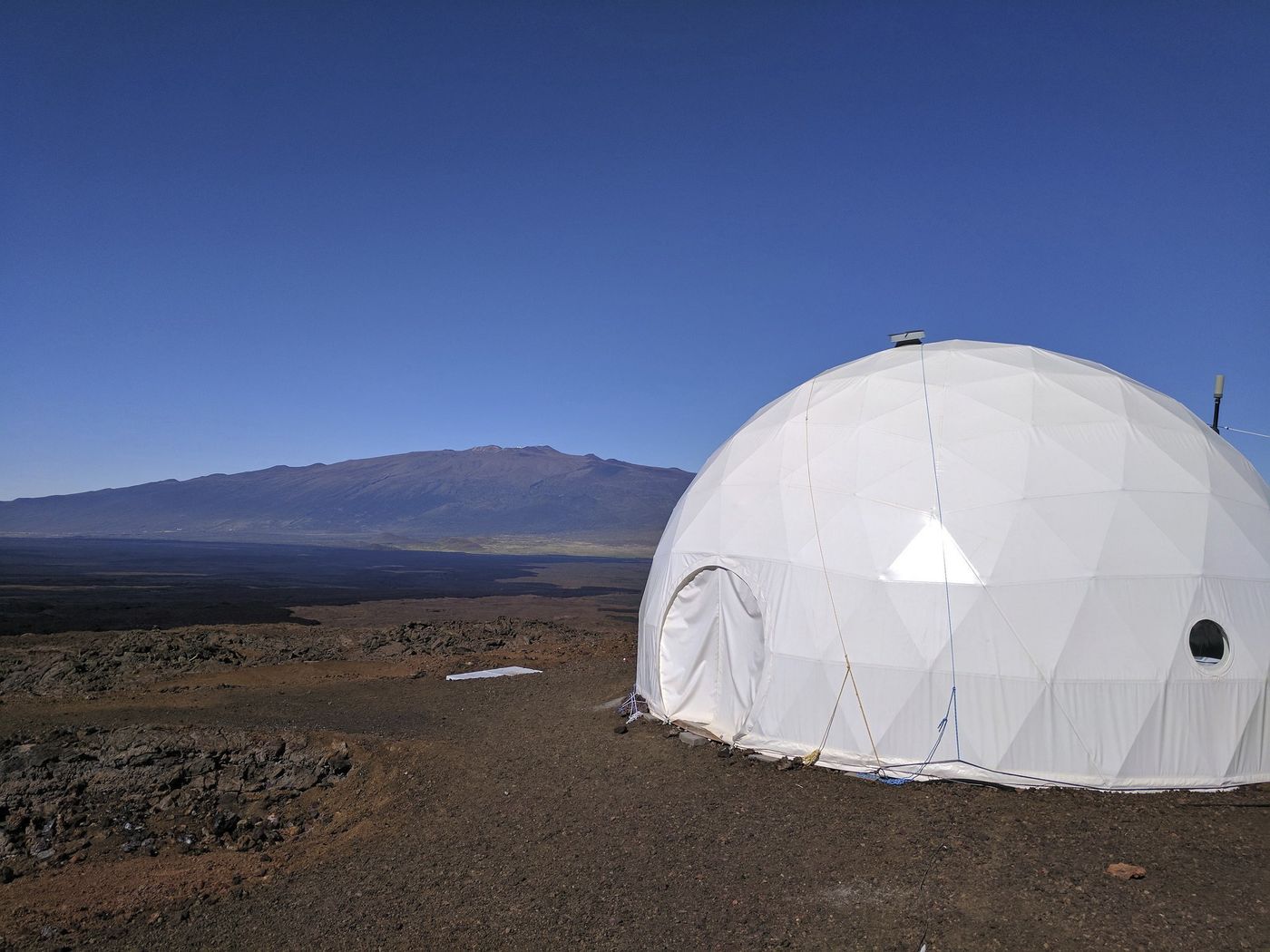Test Subjects Emerge From NASA's Hawaii-Based Mars-Like Habitat After 8 Months
With only a few decades to come before NASA wants to start putting humankind on Mars to study it in person, the space agency is doing everything it can to prepare for the significant milestone. A bevy of related experiments are happening right here on Earth, many of which take place in simulated harsh Martian environments.
Among said operations, Six Hawaii Space Exploration Analog and Simulation (HI-SEAS) crew members recently emerged from a geodesic dome in the middle of Mauna Loa, Hawaii after eight months of isolation. The experiment was meant to simulate what they might experience if confined to a real Martian science outpost.
Image Credit: University of Hawaii via AP
NASA notes how the trials help humanity learn more about how isolation during long-term space missions can impact a person’s psychology and thinking. Laura Lark, the crew’s IT specialist, explains:
"There are certainly human factors to be figured out, that's part of what HI-SEAS is for, but I think that overcoming those challenges is just a matter of effort. We are absolutely capable of it," she said.
Related: NASA begins experimenting with simulated Martian soil for plant growth
All the crew members zipped up inside of the dome ate either canned or freeze-dried food throughout their eight-month stay, much like International Space Station astronauts do. Moreover, they couldn’t leave to explore outside without first putting on ‘space suits.’
Citing Business Insider, NASA made the experience so realistic for the HI-SEAS crew members that they even had 20-minute delays imposed on their communication lines; this is the amount of time it would take for communication signals to get from Mars to Earth.
Throughout the entire experiment, the crew members performed a plethora of activities to measure their response to the environment. From the results, NASA could determine their behavior amongst one another, their stress levels, and their moods, among other things.
Perhaps one of the most important things NASA took note of is the inevitability of conflict that occurs when a group of unlike people are forced to live with one another for extended periods of time. Learning how to mitigate conflicts and move on from any that do occur are important aspects of these psychology experiments.
The crew members are seen exiting the geodesic dome here:
It’s not the first time NASA and HI-SEAS worked together to simulate a long-term Martian space mission, and it will likely happen again, but each passing experiment delves into new aspects of human psychology and provides valuable data about where we can improve.
Because Mars is so far away, sending rescue crews when something goes awry isn’t feasible. It’s important that we get things right the first time by ensuring that people are up for the challenge and having ways to deal with problems efficiently.
Source: Business Insider









